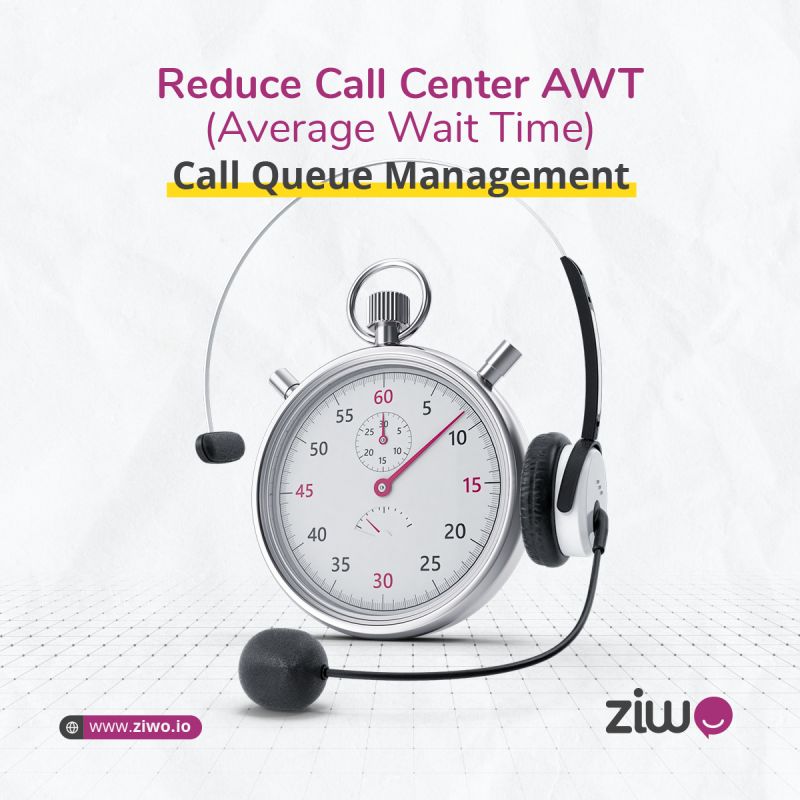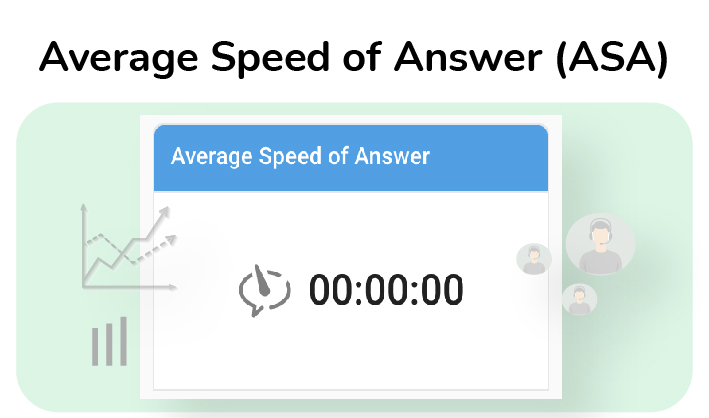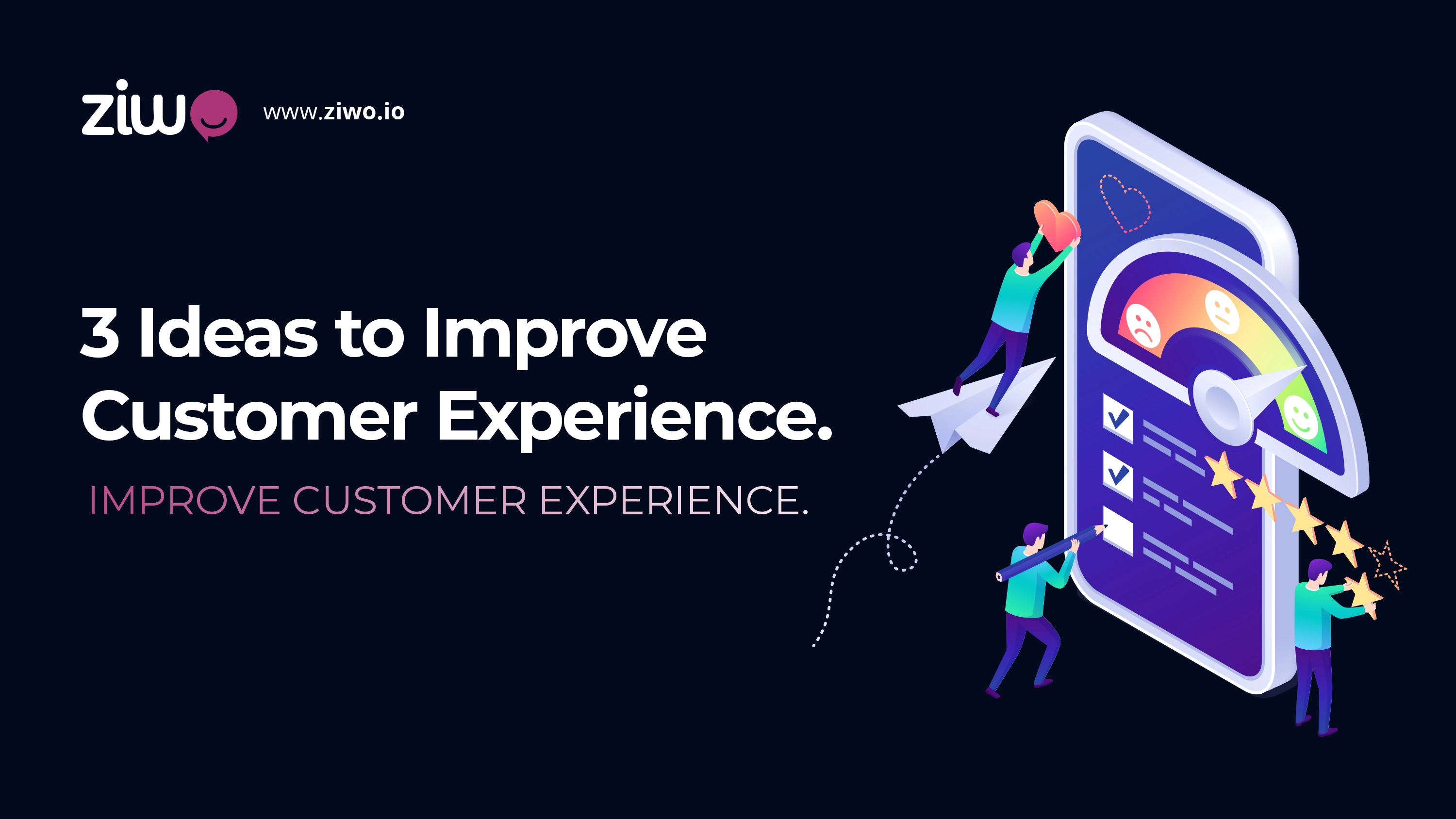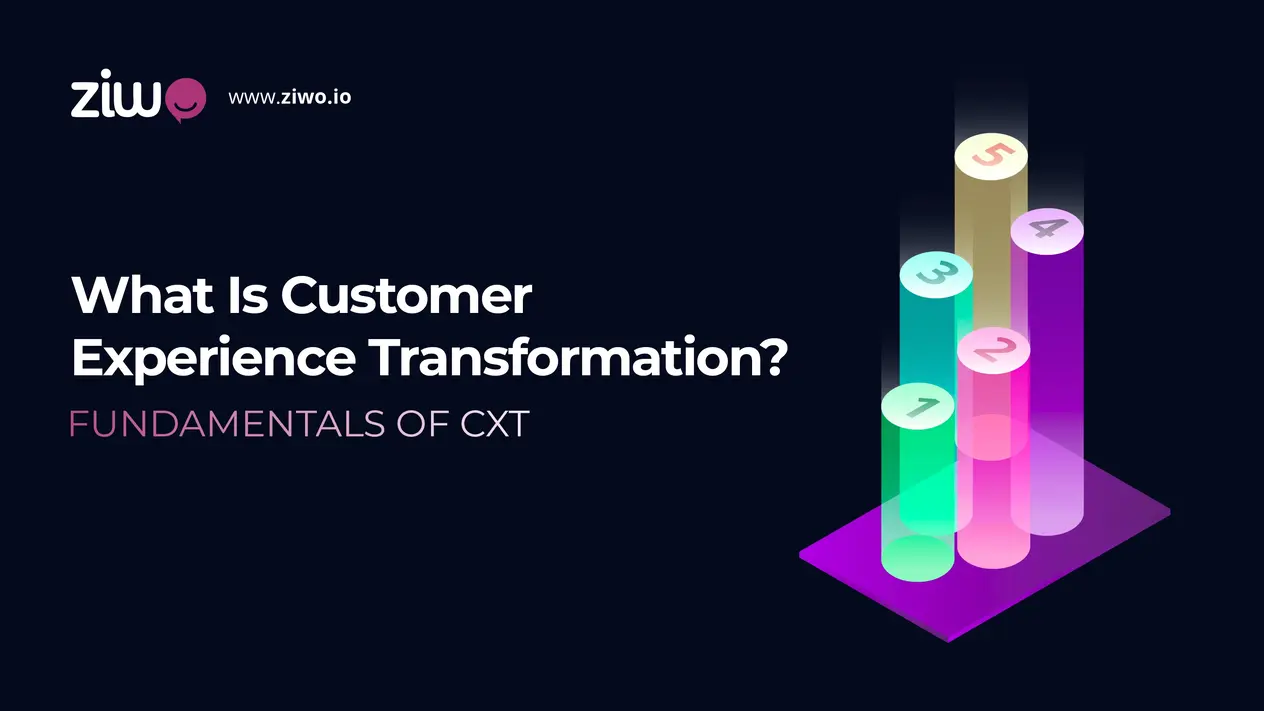
Les clients peuvent mettre en doute l'engagement d'une entreprise s'ils subissent des temps d'attente prolongés au téléphone. Le temps d'attente moyen (TAM) mesure le temps nécessaire pour répondre aux appels des clients. Pour réduire ce temps, les entreprises peuvent optimiser l'acheminement des appels, augmenter les effectifs et mettre en place des options de libre-service. Dans cet article, nous allons répondre aux questions suivantes : qu'est-ce que le temps d'attente moyen et comment les entreprises peuvent-elles le réduire pour garantir un traitement rapide et efficace des appels des clients ?
Qu'est-ce que le temps d'attente moyen dans un centre d'appel ?
Le temps d'attente moyen (AWT), ou vitesse moyenne de réponse (ASA), désigne la durée moyenne d'attente d'un appel entrant dans une file d'attente ou pour un rappel si cette fonctionnalité est activée dans le système IVR. Il se distingue du temps de traitement moyen (AHT), qui est la durée moyenne que prend un agent pour terminer un appel ou une interaction avec un client.

L'AWT peut être calculé dans l'ensemble du centre de contact, par file d'attente, ensemble de compétences, groupe d'agents, agent ou numéro de téléphone. L'objectif conventionnel de niveau de service d'un centre d'appel est 80/20, ce qui signifie que 80 % des appels doivent être traités dans les 20 secondes. Cependant, pour diverses raisons, cet objectif n'est pas toujours idéal.
Temps d'attente raisonnable et satisfaction des clients
Selon une étude réalisée en 2014, le temps d'attente maximum que les appelants étaient prêts à tolérer était de 10 minutes. Une étude plus récente menée par Arise a révélé que deux tiers des consommateurs étaient prêts à attendre moins de deux minutes, tandis que 13 % d'entre eux considéraient qu'aucun temps d'attente n'était acceptable. Si l'on ne répond pas rapidement à un appel, environ 34 % ou un tiers des appelants raccrochent et ne tentent pas de rappeler, ce que l'on appelle le taux d'abandon - une mesure essentielle pour les centres d'appels. La tendance de ces dernières années est que les clients attendent un service très rapide, voire instantané, reflétant l'influence croissante du E-Commerce et des médias sociaux où le service en temps réel est la norme. Pour répondre à cette demande, les centres d'appels doivent donner la priorité à la fourniture d'un service client rapide.
Les moyens de réduire le temps d'attente moyen
Le temps d'attente moyen (TAM) est un indicateur important pour évaluer l'efficacité de votre centre de contact. Il fournit une mesure globale de l'efficacité de votre système IVR et de la performance des agents. Mais pour réduire le TAM et les taux d'abandon, il faut s'attaquer à plusieurs facteurs, tels que l'optimisation de l'IVR et la performance des agents. Cependant, la solution n'est pas toujours évidente. Voici quelques conseils généraux qui peuvent aider toute entreprise à réduire les temps d'attente prolongés :
mettez à jour votre stratégie de gestion de la main-d'œuvre
Il est essentiel que les agents puissent traiter les appels rapidement et efficacement pour répondre aux besoins de leurs interlocuteurs, ce qui permet d'augmenter le taux de résolution au premier appel et d'améliorer la satisfaction des clients.
En outre, le fait de donner aux représentants des centres d'appels les moyens de surveiller les files d'attente et de les inciter à réduire les temps d'appel lorsque les files d'attente dépassent un certain seuil peut conduire à un traitement encore plus efficace des appels. Toutefois, si vous estimez que la gestion de la qualité de votre centre de contact est déjà optimale, il peut s'avérer nécessaire d'engager du personnel supplémentaire.
Optimiser les paramètres de la file d'attente
Les clients peuvent se sentir frustrés par un système IVR inefficace pour diverses raisons. Tout d'abord, il peut leur présenter des arborescences d'options déroutantes, ce qui entraîne frustration et insatisfaction. Deuxièmement, il peut les diriger vers le mauvais service, ce qui entraîne une perte de temps et une aggravation de la situation. En outre, un système IVR imprécis peut ne pas reconnaître correctement les entrées des clients, ce qui est source d'ennuis supplémentaires. Pour éviter ces problèmes, il est essentiel de tester minutieusement votre système IVR.
Travaillez sur le niveau de service de votre centre d'appels
L'amélioration de l'expérience client ne dépend pas toujours uniquement de la réduction du temps d'attente moyen. Parfois, il est plus efficace d'offrir une expérience de qualité supérieure qui répond pleinement aux demandes des clients sans précipiter l'appel. Si les mesures de votre centre de contact indiquent que vous pouvez ajuster votre niveau de service, par exemple de 80/20 à 80/30, 80/60 ou plus, avec peu d'impact sur les taux d'abandon, il se peut que d'autres facteurs soient plus importants pour vos clients que des temps d'attente plus courts.
Certaines recherches indiquent que 75 % des consommateurs sont prêts à dépenser plus d'argent avec une entreprise qui offre un excellent service à la clientèle, et les clients attendent de leurs représentants qu'ils soient aimables, compétents, efficaces et rapides.
Voulez-vous améliorer l'AWT dans votre centre de contact ?
En termes de satisfaction client, la diminution du temps d'attente moyen des appelants est tout aussi importante que le temps pris par les agents pour résoudre leurs problèmes. De plus, plusieurs méthodes sont disponibles pour y parvenir, comme l'optimisation du système IVR et de l'ACD, l'embauche de plus de représentants ou la mise en place de formations supplémentaires pour les aider à travailler plus efficacement dans les files d'attente. Vous pouvez utiliser diverses mesures pour évaluer l'efficacité de ces techniques.
C'est possible avec ZIWO !
Si vous cherchez à améliorer le temps d'attente moyen (AWT) dans votre centre de contact, ZIWO peut être une solution précieuse. Cet outil de centre de contact basé sur le cloud optimise les processus de traitement des appels, automatise les tâches et améliore l'efficacité des agents. Ses fonctionnalités avancées comprennent le routage intelligent, l'IVR et l'analyse en temps réel qui aident les représentants du centre d'appels à gérer les demandes des clients plus rapidement et plus efficacement.
De plus, l'interface conviviale de ZIWO, disponible en plusieurs langues, offre une facilité d'utilisation et d'accès. En outre, ses solides capacités de reporting et d'analyse offrent aux responsables de centres d'appels une vision complète de leurs opérations. Cela permet aux gestionnaires de suivre les performances, d'identifier les domaines d'amélioration et de prendre des décisions basées sur des données. Avec ZIWO, les responsables peuvent optimiser l'efficacité des centres d'appels, améliorer la productivité des agents et offrir une expérience client exceptionnelle.
Utiliser ZIWO
En utilisant ZIWO, vous pouvez facilement améliorer l'AWT de votre centre d'appels. Vous obtiendrez ainsi une plus grande satisfaction des clients, une augmentation des taux de résolution au premier appel et une diminution des coûts opérationnels.
L'interface conviviale de ZIWO permet une intégration transparente et une adoption rapide, tandis que ses fonctionnalités avancées fluidifient le traitement des appels et optimisent les performances des agents. De plus, les capacités de reporting et d'analyse de ZIWO fournissent des informations précieuses pour une amélioration continue et une prise de décision éclairée. Dans l'ensemble, la mise en œuvre de ZIWO peut générer des résultats positifs significatifs pour les opérations de votre centre d'appels.
Vous pouvez l'essayer gratuitement ici !
File d'attente d'appels | Introduction | Avantages | Comment l'installer
>
Qu'est-ce que la fonctionnalité Agent itinérant/Agent distant ?
>
JustClean atteint le sommet de l'industrie du nettoyage avec le logiciel ZIWO
>
Les 10 meilleures compétences des agents des centres d'appel
>
Indicateurs clés de performance du centre d'appels : Définitions et meilleures pratiques
>





